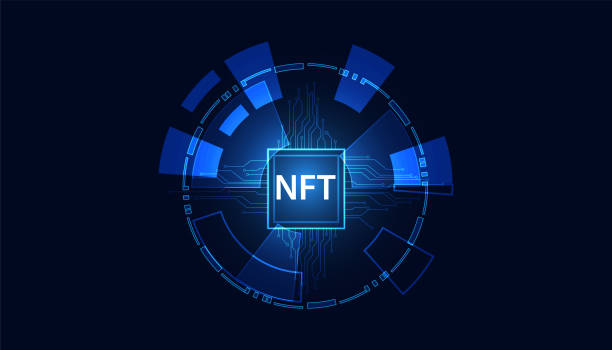### What is On-Page SEO and Why Does it Matter?
[Image]
**#On_Page_SEO** refers to the set of actions we take within our website to improve the site’s ranking in search engines like Google.
These actions include optimizing content, site structure, HTML tags, and other internal elements of the site.
The importance of On-Page SEO lies in the fact that search engines use these factors to better understand the content of the site and its relevance to user searches.
A site with strong On-Page SEO has a better chance of being seen in search results and attracting organic traffic.
In fact, On-Page SEO is one of the main pillars of digital marketing, and without it, other efforts for SEO and online marketing will not achieve the desired results.
On-Page SEO helps Google better understand your site and consequently assigns it a better ranking.
> Did you know that 94% of first impressions of a company are related to its website design?
> Rasaweb helps you create the best first impression by providing professional corporate website design services.
> ✅ Creating a professional and reliable image of your brand
> ✅ Easier attraction of potential customers and improved online position
> ⚡ Get a free corporate website design consultation
### Keyword Research – The Cornerstone of On-Page SEO
[Image]
Keyword research is the first and most important step in On-Page SEO.
By identifying keywords related to your business and website content, you can tailor your content strategy to the needs of users and their searches.
For this, you can use various tools such as Google Keyword Planner, Ahrefs, and Semrush.
When choosing keywords, pay attention to search volume, competition level, and the word’s relevance to your website content.
Also, try to use long-tail keywords, as these keywords usually have less competition and can attract more targeted traffic to your site.
By conducting thorough keyword research, you can optimize your website content to be attractive to search engines and rank higher in search results.
This research also helps you better understand the needs of your audience and create content that answers their questions and problems.
Using keywords correctly in content greatly helps improve your site’s On-Page SEO.
### Optimizing Title and Meta Descriptions – Attracting Clicks from Search Results
[Image]
The title tag and meta description are two important elements in the HTML of web pages that are displayed in search results.
The page title should be concise and attractive and include the main keyword of the page.
The title length should be between 50 and 60 characters to be fully displayed in search results.
The meta description should also be a short and attractive summary of the page content that encourages users to click.
The meta description length should be between 150 and 160 characters.
By optimizing the title and meta description, you can increase your click-through rate (CTR) in search results and attract more traffic to your site.
These two elements play an important role in On-Page SEO and should not be overlooked.
Using relevant and attractive keywords in the title and meta descriptions helps users and search engines quickly understand what your page is about and what value it offers.
Optimizing meta tags is one of the vital elements in On-Page SEO.
“`html
“`
| Feature | Description |
|—|—|
| Page Title | Concise, attractive, includes the main keyword |
| Meta Description | Short and attractive summary, encouraging clicks |
### Content Optimization – Producing Valuable and SEO-Friendly Content
[Image]
Content is king! Producing valuable, engaging, and SEO-friendly content is one of the most important factors for success in On-Page SEO.
Your content should meet the needs of users, provide accurate and useful information, and answer their questions.
Also, your content should be optimized to be attractive to search engines.
To do this, use relevant keywords in the title, text, and subheadings.
Also, present your content in a structured and organized manner, use high-quality images and videos, and pay attention to internal and external linking.
By producing high-quality and SEO-friendly content, you can improve your site’s ranking in search results and attract more organic traffic.
Remember that Google is always looking to provide the best and most relevant results to users, so producing valuable content will be the key to your success in On-Page SEO.
Using a suitable content production strategy can greatly help you with SEO.
> Are you tired of your company’s website failing to meet your expectations? With Rasaweb, design a professional website that showcases the true face of your business.
> ✅ Increase the attraction of new customers and sales leads
> ✅ Increase the credibility and trust of your brand with your audience
> ⚡ Get a free website design consultation!
### Optimizing URL Structure – Creating SEO-Friendly URLs
[Image]
The URL structure of web pages is another important factor in On-Page SEO.
Your URLs should be short, readable, and include relevant keywords.
Avoid using unnecessary characters and numbers in your URL.
Also, try to create your URLs logically and structured so that users and search engines can easily understand your site structure.
An SEO-friendly URL helps search engines better understand the topic of the page and consequently assigns it a better ranking.
For example, instead of using complex and meaningless URLs like example.com/page?id=123, use simple and readable URLs like example.com/seo-internal.
Optimizing URL structure plays an important role in On-Page SEO and can help improve your site’s ranking in search results.
### Optimizing Images – Reducing Size and Using Alt Text
[Image]
Images play an important role in the attractiveness and user-friendliness of your site, but if they are not properly optimized, they can slow down the site loading speed and negatively impact On-Page SEO.
To optimize images, first reduce their size as much as possible without significantly reducing their quality.
For this, you can use online image compression tools or image editing software.
Also, write a suitable and descriptive alt text for each image.
Alt text helps search engines understand the content of the image and consequently improve your site’s ranking in search results.
Alt text should be concise, relevant to the image, and include relevant keywords.
By optimizing images, you can increase site loading speed, improve user experience, and improve your site’s ranking in search results.
Optimizing images is an essential part of On-Page SEO.
### Internal Linking – Creating an Organized and Relevant Link Structure
[Image]
Internal linking refers to creating links between different pages of a website.
This helps search engines better understand the site structure and find related pages.
Also, internal linking helps users easily navigate the site and find the content they are looking for.
To create an organized and relevant link structure, use relevant keywords in the anchor text and direct the links to relevant and valuable pages.
Avoid excessive and unnecessary linking, as this can negatively impact On-Page SEO.
Internal linking is an important strategy in On-Page SEO and can help improve your site’s ranking in search results.
Internal linking and creating a suitable link structure help search engines to better review your site’s pages.
“`html
“`
| Factor | Description |
|—|—|
| Anchor Text | Using relevant keywords |
| Target Pages | Linking to relevant and valuable pages |
### Optimizing Site Loading Speed – Providing a Better User Experience
[Image]
Site loading speed is an important factor in user experience and On-Page SEO.
Users who encounter slow site loading speeds are likely to leave the site and visit other sites.
This can lead to a decrease in conversion rates and a drop in the site’s ranking in search results.
To optimize site loading speed, you can use various tools such as Google PageSpeed Insights and GTmetrix.
These tools help you identify site loading speed issues and find appropriate solutions to fix them.
Some ways to optimize site loading speed include: reducing image size, using a CDN, enabling browser caching, optimizing code, and using quality hosting.
By optimizing site loading speed, you can improve user experience, increase conversion rates, and improve your site’s ranking in search results.
Optimizing site speed is one of the fundamental factors in On-Page SEO.
> Are you frustrated with the low conversion rates of your online store?
> Rasaweb, with professional online store design, is your definitive solution!
> ✅ Increase your sales and revenue
> ✅ An unparalleled user experience for your customers
> ⚡ Get a free consultation right now!
### Site Responsiveness – Compatibility with Different Devices
[Image]
Given the increasing use of mobile devices for searching the internet, site responsiveness is a crucial factor in On-Page SEO.
A responsive site automatically adapts to the screen size of different devices (such as computers, tablets, and mobiles) and provides a suitable user experience.
Google gives great importance to responsive sites and ranks them higher in search results.
To ensure your site is responsive, you can use Google’s Mobile-Friendly Test tool.
If your site is not responsive, you need to update your website design or use a responsive template.
Responsive site design not only helps improve user experience but also has a positive impact on On-Page SEO and your site’s ranking in search results.
Having a responsive design for a website is an important principle in optimizing the site for search engines.
### Using Schema Markup – Helping Search Engines Better Understand Site Content
[Image]
Schema Markup is a markup code that helps you provide more information about your site content to search engines.
By using Schema Markup, you can declare information such as business name, address, phone number, opening hours, user reviews, events, and other important information to search engines.
This helps search engines better understand your site content and consequently assigns it a better ranking.
Schema Markup can also lead to the display of rich snippets in search results, which increases the attractiveness of your site and increases the click-through rate (CTR).
Using Schema Markup is an advanced strategy in On-Page SEO and can help you stay ahead of the competition.
This code helps Google understand the content of the page more easily and categorize the information correctly.
On-Page SEO with Schema Markup can help improve site ranking.
#### Frequently Asked Questions
| Question | Answer |
|—|—|
| What is On-Page SEO? | On-Page SEO involves optimizing elements directly within your control and inside your website. Its goal is to help search engines better understand the page’s content and improve its ranking. |
| Why is On-Page SEO important? | On-Page SEO gives clear signals to search engines about the page’s content, improves user experience, and increases the chance of attracting organic traffic. |
| What are the most important On-Page SEO factors? | Keywords, Title Tag, Meta Description, URL Structure, High-Quality Content, Image Optimization, and Internal Links are among the most important factors. |
| What is the role of the Title Tag in On-Page SEO? | The Title Tag is one of the most important signals for search engines and users, specifying the main topic of the page. It should include the main keyword and be attractive. |
| How important is the Meta Description? | The Meta Description does not directly affect ranking, but by encouraging users to click, it can improve the click-through rate (CTR). |
| How do we optimize images for On-Page SEO? | By using a descriptive file name, appropriate Alt Text containing keywords, compression to reduce size, and correct dimensions. |
| What effect do Internal Links have on SEO? | Internal Links help search engines discover and index site pages, distribute PageRank throughout the site, and improve user navigation. |
| Is page loading speed a factor in On-Page SEO? | Yes, page loading speed is a crucial factor in On-Page SEO and user experience. Slower pages can lead to higher bounce rates and lower rankings. |
| What are the characteristics of high-quality content for On-Page SEO? | High-quality content should be comprehensive, unique, relevant, reliable, readable, and fully answer users’ needs and questions. |
| How can keywords be used in content? | Keywords should be used naturally in the title, subheadings, first paragraph, body text, and alt text of images. Avoid keyword stuffing. |
**And other services of Rasaweb Advertising Agency in the field of advertising**
**Intelligent Website Development**: A professional solution for attracting customers by focusing on the use of real data.
**Intelligent Custom Software**: Transform campaign management with the help of intelligent data analysis.
**Intelligent Advertising Campaign**: A quick and efficient solution for improving SEO ranking with a focus on precise audience targeting.
**Intelligent Conversion Rate Optimization**: A quick and efficient solution for online growth with a focus on Google Ads management.
**Intelligent Google Ads**: An effective tool for attracting customers through Google Ads management.
**And more than hundreds of other services in the field of internet advertising, advertising consulting, and organizational solutions**
**Internet Advertising | Advertising Strategy | Advertorials**
#### Sources
SEORooz – On-Page SEO Guide
,Raya Marketing – On-Page SEO Training
,Faraz Network – What is On-Page SEO?
,Zhaket – What is On-Page SEO and Why is it Important?
❓ Are you ready to grow your business in the digital world? With the comprehensive services of Rasaweb Afarin Digital Marketing Agency, including online store design and SEO optimization, have a strong presence in the online market.
📍 Tehran, Mirdamad Street, next to Central Bank, South Kazerun Alley, Ramin Alley No. 6




